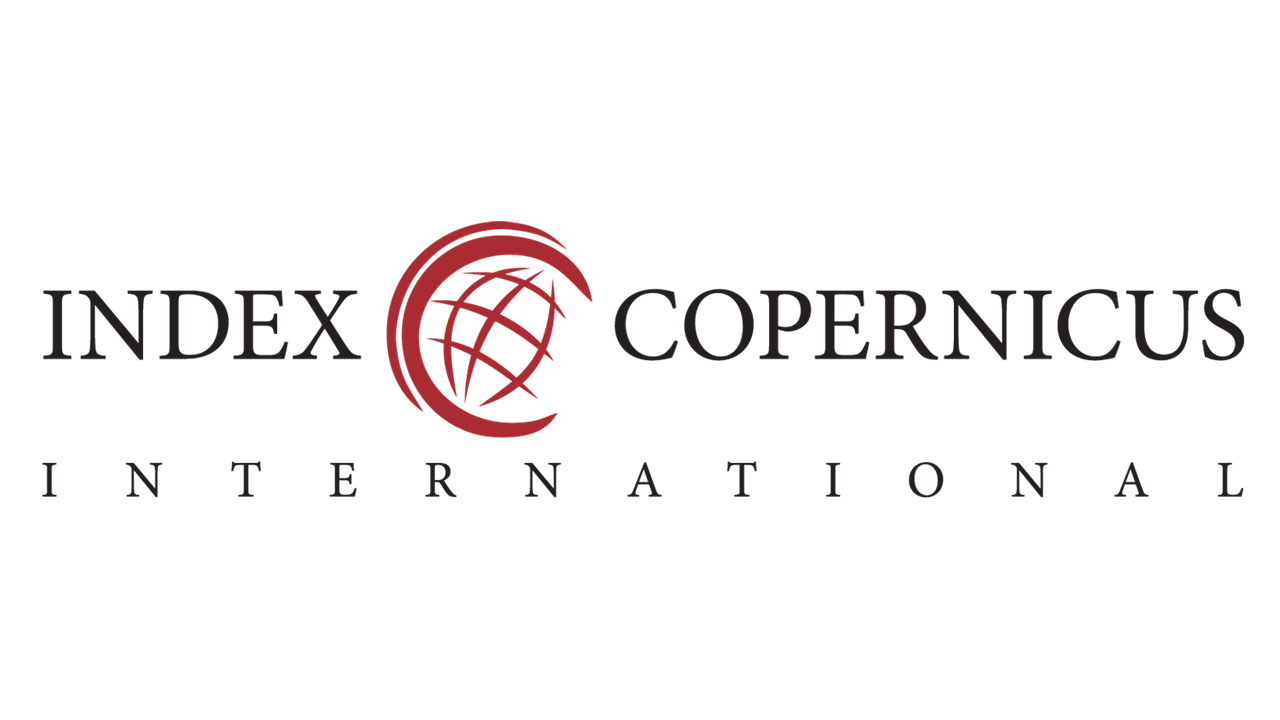SINERGI ASEAN OUTLOOK ON INDO-PACIFIC DENGAN FREE AND OPEN INDO-JEPANG DALAM BIDANG PERTAHANAN UNTUK MENCIPTAKAN KAWASAN INDO-PASIFIK YANG AMAN DAN STABIL
DOI:
https://doi.org/10.31315/jsdk.v15i1.8866Keywords:
Sinergy, ASEAN, ASEAN Outlook on Indo-Pacific, Japan, Free and Open Indo-Pacific, DEfence Diplomacy, Indo-PacificAbstract
Abstract
The Indo-Pacific region in recent decades has become the center of world security political constellations. The Indo-Pacific region has a strategic environment in terms of economic, social, political and security that attracts the attention of various international actors. Various countries and international organizations began to direct their foreign policies towards this region. ASEAN wants this region to be safe and stable in order to create a good regional environment for the economic growth of ASEA countries. Meanwhile, Japan also wants this region to be safe and stable, especially to maintain the sovereignty of its country and smooth sea trade and shipping routes for the distribution of energy imports from various countries. Therefore, the synergy of the two actors to create a safe and peaceful Indo-Pacific region is important. This study uses qualitative methods and a case study research design. The data were obtained through interviews and literature studies to be further analysed using theoretical approaches including Regional Security Complex Theory (RSCT), synergy theory, and defence diplomacy. The output obtained is the realization of the synergy of the ASEAN Outlook on Indo-Pacific with Free and Open Indo-Pacific Japan which supports the creation of a safe and stable Indo-Pacific region.
Keywords: Sinergy, ASEAN, ASEAN Outlook on Indo-Pacific, Japan, Free and Open Indo-Pacific, Defence Diplomacy, Indo-Pacific
Abstrak
Kawasan Indo-Pasifik beberapa dekade belakangan ini menjadi pusat konstalasi politik keamanan dunia. Kawasan Indo-Pasifik memiliki lingkungan strategis baik dari segi ekonomi, sosial, politik, dan keamanan yang menarik perhatian berbagai aktor internasional. Berbagai negara dan organisasi internasional mulai mengarahkan kebijakan luar negerinya terhadap kawasan ini. ASEAN menginginkan kawasan ini aman dan stabil demi menciptakan lingkungan kawasan yang baik bagi pertumbuhan ekonomi negara-negara ASEAN. Sedangkan Jepang juga menginginkan kawasan ini aman dan stabil terutama menjaga kedaulatan negaranya dan kelancaran jalur perdagangan dan pelayaran laut untuk distribusi impor energi dari berbagai negara. Oleh karena itu sinergi kedua aktor untuk menciptakan kawasan Indo-Pasifik yang aman dan damai merupakan hal yang penting. Penelitian ini menggunakan metode kualitatif dan desain penelitian studi kasus. Data-data diperoleh melalui wawancara dan studi kepustakaan untuk selanjutnya dianalisis dengan menggunakan pendekatan teori-teori antara lain Regional Security Complex Theory (RSCT), teori sinergi, dan teori diplomasi pertahanan. Output yang diperoleh adalah terwujudnya sinergi ASEAN Outlook on Indo-Pacific dengan Free and Open Indo-Pacific Jepang yang mendukung terciptanya kawasan Indo-Pasifik yang aman dan stabil.
Kata kunci: Sinergi, ASEAN, ASEAN Outlook on Indo-Pacific, Jepang, Free and Open Indo-Pacific, Diplomasi Pertahanan, Indo-Pasifik
References
Rahmawati, Triana dkk. (2014). Sinergitas Stakeholders Dalam Inovasi Daerah (Studi Pada Program Seminggu Di. Jurnal Administrasi Publik. Universitas Brawijaya dengan Vol 2, No 4, 641-647.
ASEAN. (2019, June). ASEAN Outlook on Indo-Pasific. Retrieved from Association Southeast Asian Nations: https://asean.org/storage/2019/06/ASEAN-Outlook-on-the-Indo-Pacific_FINAL_22062019.pdf
ASEAN. (2020, 11 13). Joint Statement of the 23rd ASEAN-Japan Summit on Cooperation on ASEAN Outlook on the Indo-Pacific. Retrieved from ASEAN: https://asean.org/joint-statement-of-the-23rd-asean-japan-summit-on-cooperation-on-asean-outlook-on-the-indo-pacific-2/
ASEAN. (2021, Agustus). Joint Statement of The 23rd ASEAN Japan Summit on Cooperation on ASEAN Outlook on Indo-Pasific. Retrieved from ASEAN: https://asean.org/wp-content/uploads/2021/08/Joint-Statement-of-the-23rd-ASEAN-Japan-Summit-on-Cooperation-on.pdf
ASEAN. (2021, 06 14). Overview of ASEAN-Japan Dialogue Relations. Retrieved from Association of Southeast Asian Nations: https://asean.org/wp-content/uploads/20210614_Overview-ASEAN-Japan-Relations-full-version.pdf
Bahri, M. (2020). Kebijakan Freedom of Navigation Amerika Serikat di Laut Tiongkok Selatan. WANUA : Jurnal Hubungan Internasional univerrsitas Hasanuddin, Volume 5 No. 2. Desember 2020, 132.
Barry Buzan & Ole Wavier. (2003). Regions and Powers the Structure of International Security. Cambridge: Cambridge University Press.
Barston, R. (2014). Modern Diplomacy. (Fourth). Routledge.
Berridge, G. R., & Lloyd, L. (2012). Diplomacy. In In The Palgrave
Macmillan Dictionary of Diplomacy (3rd ed., p. 98). Palgrave Macmillan.
Breslin, S. (2010). Regions and Regionalism in World Politics. New York: Palgrave.
BRIN. (2021, Juli 11). Peran Kerja sama Jepang-ASEAN dalam Kancah Indo-Pasifik. Retrieved from Organisasi Riset Ilmu Sosial dan Humaniora badan Riset dan Inovasi Nasional: https://ipsh.brin.go.id/2021/07/11/peran-kerja-sama-jepang-asean-dalam-kancah-indo-pasifik/
Catherine Marshal dan Gretchen B. Rossman. (1995). Designing Qualitative Research. California: Sage Publications.
Cheyre, J. E. (2013). The Oxford Handbook of Modern Diplomacy. Oxford university Press chapter Defense Diplomacy.
Cottey, A., & Forster, A. (2004). Reshaping Defence Diplomacy: New Role for Military Cooperation and Assistance. New York: Oxford University Press inc.
Covey, S. (1989). The Seven Habits of Highly Effective People. New York: Simon and Schuster.
Hampden-Turner, C. (1990). Charting the Corporate Mind: Graphic Solutions to Business . New York: The Free Press.
Japan Ministry of Defense. (2020, July). Achieving the Free and Open Indo Pasific (FOIP) Vision Japan Ministry Of Defense's Approach. Retrieved from Japan Ministry of Defense: https://www.mod.go.jp/j/approach/agenda/guideline/2019/pdf/20190801_e.pdf
Joseph S. Nye, J. (2005). Soft Power The Means to Succes in World Politics. Public Affairs.
Kedutaan Besar Jepang di Indonesia. (n.d.). Ekonomi dan Industri. Retrieved from Kedutaan Besar Jepang di Indonesia: https://www.id.emb-japan.go.jp/expljp_15.html
Kemlu RI. (2019, 06 28). Menlu Jepang sambut baik Outlook ASEAN mengenai Indo-Pasifik dan hargai kepemimpinan Indonesia di kawasan. Retrieved from Kementerian Luar Negeri Republik Indonesia: https://kemlu.go.id/portal/id/read/405/berita/menlu-jepang-sambut-baik-outlook-asean-mengenai-indo-pasifik-dan-hargai-kepemimpinan-indonesia-di-kawasan#!
Kemlu RI. (2022, 08 04). ASEAN-Japan Ministerial Meeting: Kerja Sama Konkrit di Indo-Pasifik Perlu Diperkuat. Retrieved from Kementerian Luar Negeri Republik Indonesia : https://kemlu.go.id/portal/id/read/3879/view/asean-japan-ministerial-meeting-kerja-sama-konkrit-di-indo-pasifik-perlu-diperkuat
Miles, M., Huberman, M., & Saldana, J. (2014). Qualitative Data Analysis: A Methods Sourcebook (3rd ed.). SAGE.
Ministry of Defense of Japan. (2016, 11). Vientiane Vision: Japan's Defense Cooperation Initiative with ASEAN. Retrieved from Ministry of Defense of Japan:
https://www.mod.go.jp/en/d_act/exc/vientianevision/index.html
Ministry of Defense of Japan. (2022). Defense of Japan 2022. Retrieved from Ministry of Defense of Japan: https://www.mod.go.jp/en/publ/w_paper/index.html
Ministry of Defense of Japan. (2022). Vientiane Vision 2.0. Retrieved from Ministry of Defense of Japan: https://www.mod.go.jp/en/d_act/exc/admm/06/vv2_en.pdf
Ministry of Foreign Affairs of Japan. (2022, Mei 16). Foreign Policy. Retrieved from Free and Open Indo-Pacific: https://www.mofa.go.jp/policy/page25e_000278.html
Nazir, M. (2003). Metode Penelitian. Jakarta: Ghalia.
OEC. (2020). Japan. Retrieved from OEC: https://oec.world/en/profile/country/jpn#monthly-trade-latest-trends
Parameswaran, P. (2019, 10 19). Vientiane Vision 2.0 Puts Japan’s Asia Security Role into Focus. Retrieved from The Diplomat: https://thediplomat.com/2019/11/vientiane-vision-2-0-puts-japans-asia-security-role-into-focus/
Parameswaran, P. (2019, 19 11). Vientiane Vision 2.0 Puts Japan’s Asia Security Role into Focus. Retrieved from The Diplomat: https://thediplomat.com/2019/11/vientiane-vision-2-0-puts-japans-asia-security-role-into-focus/
Purwaka, I. F. (2018). Skripsi Upaya Jepang Dalam Proses Amandemen
Pasal 9 Konstitusi Jepang Tentang Kebijakan Pasifisme dan Dukungan Amerika Serikat Periode 2012-2016. Jakarta: Prodi Ilmu Hubungan Internasional, Fakultas Ilmu Sosial dan Ilmu Politik Universitas Islam Negeri Syarief Hidayatullah.
Roza, R. (2019). Pandangan ASEAN Terhadap Indo-Pasifik. Info Singkat Vol. XI, No.12/II/Puslit/Juni/2019, 9.
Sahashi, R. (2019). The Indo-Pacific in Japan’s Foreign Policy. Center For Strategic & International Studies, 1-11.
Sudo, S. (1988). Japan-ASEAN Relations: New Dimensions in Japanese
Foreign Policy. Asian Survei Vol. 28, No. 5 (May, 1988), 512-515.
The Department of Defense. (2019). Indo Pasific Strategy Repost Preparadness, Partnership, and Promoting Networked Region. Retrieved from The Department of Defense: https://media.defense.gov/2019/Jul/01/2002152311/-1/-1/1/DEPARTMENT-OF-DEFENSE-INDO-PACIFIC-STRATEGY-REPORT-2019.PDF
Winger, G. (2014). The Velvet Gauntlet : A Theory of Defense Diplomacy What Is Defense Diplomacy ? In A. Lisiak & N. Smolenski (Eds.), What Do Ideas Do? IWM Junior Visiting Fellows’ Conferences, (pp. 1-15).
Downloads
Published
Issue
Section
License
1. Copyright of this journal is possession of Editorial Board and Journal Manager, by the knowledge of the author, whilst the moral right of the publication belongs to the author.
2. The legal formal aspect of journal publication accessibility refers to Creative Commons Atribusi-Non Commercial-No Derivative (CC BY-NC-SA), implies that publication can be used for non-commercial purposes in its original form.
3. Every publication (printed/electronic) are open access for educational purposes, research, and library. Other than the aims mentioned above, editorial board is not responsible for copyright violation











